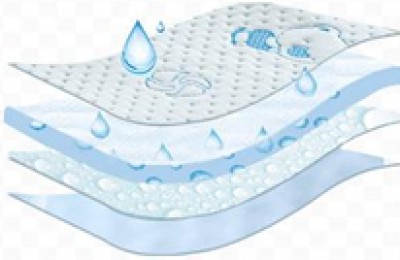In recent days, the Yangtze River Delta region has continued to experience high temperatures due to the influence of the subtropical high pressure. Since July 3, Zhejiang has continued to experience sunny, hot and high temperatures. As of 10:11 a.m. on July 14, Zhejiang has issued 52 high temperature red warnings. In Jiangsu, Suzhou, Wuxi and other places have also issued high temperature warnings continuously. The highest temperatures in many places have exceeded 40°C. Such high temperatures have been rare in recent years and have had a serious impact on the start-up of textile companies.
On the other hand, the international financial market has undergone tremendous changes last week. The U.S. dollar has strengthened, and the euro exchange rate has been lower than the U.S. dollar for the first time. The market is full of pessimism about the economic trend in the future, which has led to a sharp drop in international oil prices, caused a sharp fall in raw material prices, and also caused the textile market to appear. Some unusual phenomena.
Weaving factories generally have holidays
The high temperature this summer is coming fiercely will be a huge test for those working in the textile industry. If ordinary high temperatures only bring some discomfort to people, when the temperature exceeds a certain level, working under high temperatures for a long time may cause heat stroke and even endanger life.
In the textile industry, most weaving workshops do not have air conditioning, and it is unbearably hot after work starts. What is even worse is the printing and dyeing workshop, which is usually known as a “steam box”. You will sweat profusely after working for a period of time at normal temperatures. Dripping, not to mention the recent high temperature.
Therefore, many textile companies have chosen to take holidays, and the holiday times vary.
Mr. Chen, the person in charge of a weaving company that produces nylon yarn and polyester taffeta, said: “I’ve been reading the news recently and there’s been a lot of news about heat stroke. I’ve heard that some workers have died because of the heat. problem, so we have a holiday. I don’t know when exactly it will be. Let’s see when the temperature drops a little.”
Mr. Li, the person in charge of a high-end Chunya textile manufacturing company, was under deadline pressure, so he said he took a vacation for fear of workers suffering from heatstroke, but only for three days.
Of course, some companies also give holidays because of employee requirements. Mr. Wang, the person in charge of a weaving company that specializes in four-way stretch fabrics, said: “Now that I have orders on hand, I don’t really want to take a holiday. Even if the weather is hot, I will give it to the workers. We added bonuses and put ice cubes in the workshop to cool down, but after one day of work, the workers said they still couldn’t stand it, so they finally took the day off.”
The same is true for printing and dyeing companies. In order to avoid employees suffering from heat stroke, many printing and dyeing companies choose to rest during the day and start work at night.
Of course, weaving, printing and dyeing companies have given employees a large-scale holiday this time. In addition to weather reasons, high inventory and low sales are also important issues. According to the inventory monitoring of China Silk City Network, the overall inventory of weaving enterprises has been accumulating since April this year, with the average inventory reaching 37 days.
In addition, due to the low number of orders, the printing and dyeing operation rate has also reached the lowest level in recent years.
Therefore,Weaving companies have recently taken holidays due to high temperature weather, which may have played into the hands of some companies and become a means to reduce weaving inventory.
The prices of mass-market goods have not been reduced, but the prices of high-end fabrics have been reduced
In addition, this investigation also discovered something unexpected and reasonable. It was originally thought that after the sharp drop in raw material prices this week, the price of conventional fabrics would subsequently fall. In fact, this is not the case. On the contrary, the more high-end fabrics, especially orders from some international first-tier brands, have seen a downward trend in fabric prices.
Mr. Lu mainly deals in polyester-cotton and four-way stretch fabrics. Recently, the prices of both polyester filament and cotton have fallen sharply. However, the prices of products produced by Mr. Lu have not fluctuated for the time being. Mr. Lu explained: “The factory now has about 60 days of gray fabric inventory. Many of the raw materials for weaving this inventory were purchased at a high price, so the current selling price of the cloth is close to the cost price. If it drops further, it will easily disrupt the market order. , if everyone engages in a price war, business will be lost.”
There are many fabric bosses who think like Mr. Lu,But the downstream demand is indeed not high, so the price of conventional fabrics does not seem to have dropped much. In fact, there is a price but no market, but some The situation in the higher-end fabric market is exactly the opposite.
Mr. Wu, the marketing manager of a weaving company that specializes in functional fabrics, said: “The orders on hand are okay now, but if we talk about some new orders, even some well-known international and domestic brands will start to lower their prices this year. , and the delivery period of payment has also been extended. In the past, our payment period was 1-3 months, but this year it will generally be delayed by 1-2 months.In March, because they are also under great financial pressure. ”
Due to the shrinkage of terminal consumption, first-tier brands with deep pockets in previous years have been forced to start working on costs this year. At the same time, some high-end orders originally placed in Europe, America, Japan and South Korea have lost production capacity and costs due to the epidemic. It has flowed to China for other reasons, but only a few companies in China can currently undertake these orders, and the business of these companies is even better than in previous years.
Postscript
Affected by the global economic environment this year, global demand for textiles has shrunk, and conventional product production capacity has become overcapacity. Weaving companies are troubled by inventory, but they are unwilling to sell goods to disrupt the market, so they reduce the start-up rate and encounter The high temperature has taken advantage of the holiday, and the price of gray fabrics has reached a point where there is no way to drop it. Therefore, when the raw materials decline, it stabilizes, but there is a price but no market.
Due to the impact of the epidemic, the production of high-end textiles has been transferred from Europe, the United States, Japan, South Korea and China. However, due to the general market situation, some of these brands have also begun to experience cost pressures this year. There is a steady stream of orders from domestic companies that are qualified to undertake them, but they are also There has been some price-cutting behavior.
</p







